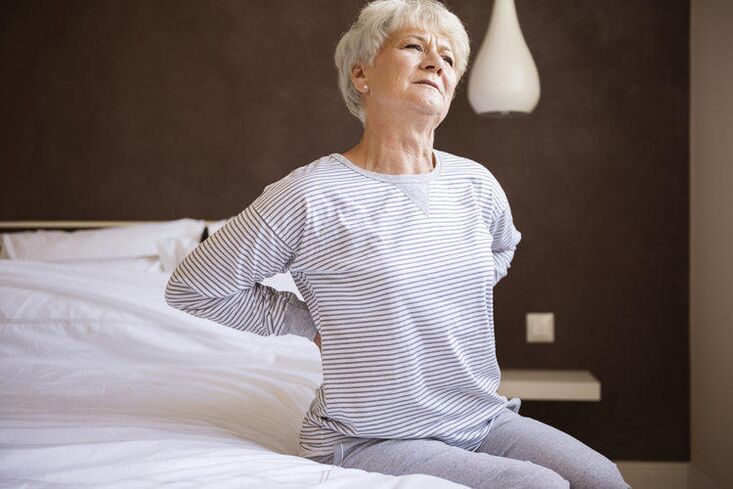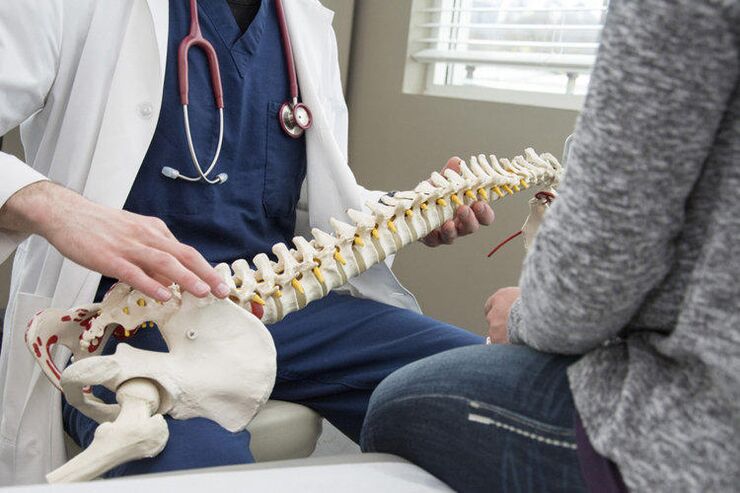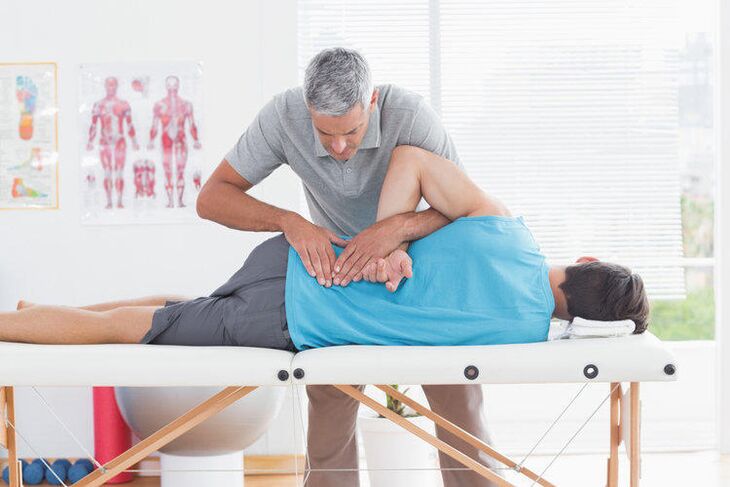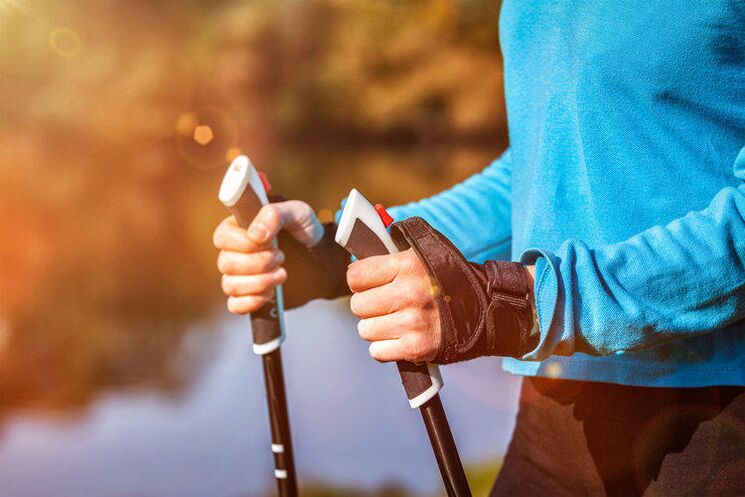Osteochondrosis, degenerative-dystrophic changes are a disease diagnosed in the cartilage tissues of spine, and are accompanied by the structure and functionality of intervert. Depending on the localization of damaged tissues, the cervical, thoraker and thus vary from osteocondrosis of cervical, thoracum and Lombber.

Osteochondrosis is a disease of the spinal column, where the intervertebral disks are of degenerative and dystrophic lesions. Degenerative-dystrophic lesions with the development of osteocondrosis are applied to vertebral tissue.
The main feature showing the development of osteocondrosis in the neck, back, lower rear area, the back side, the back, chest, shoulders, upper thighs, etc. displacement. In the absence of therapy in time, osteocondrosis becomes a incurable situation.
The main factor in the development of osteocondrosis is an uneven load in the spine. The habit of carrying a bag or on the one hand, a pose in a seating, a sleepy pound, a sleepy pillow, a high pillow, anatomical wrong shoe, is a common cause of load properly.
Additional risk factors include hypodinamia, sedentary lifestyle, excess weight, rear injuries, lower extremities, other disorders of flat legs and musculoskelet system, as well as the age of age inbrebral columns in the blood supply.
The following factors can also play in the etiology of osteocondrosis:
- the physical overdrawn of the body;
- Neuro-emotional depletion;
- Diseases of the gastrointestinal tract that prevents metabolic disorders, poisoning, food items;
- professional risks, especially on vibration platforms;
- genetic tendency;
- Violation of the posture during active growth, scoliosis;
- To wear anxious shoes (compressed, heels);
- extended and / or regular dehydration;
- low diet, hypovitaminus;
- smoking;
- Pregnancy, especially with a large, unprecedented muscular-ligamament apparatus (due to the displacement of the body of the body).
Osteocondrosis in the dynamics of the disease exceeds four stages:

- Osteocondrosis of stage 1 (degree) is characterized by the initial stage of pathology in the nucleus of the intervertebral disk. Related to excessively, the dehydration process of the nucleus (dehydration), it leads to a decrease in the height of the disc and the formation of the cracks in the fibrous ring. Symptoms of this stage are generally not, a concerned static pose, active action, etc.
- In 2 stages, the decrease in the height of the discs causes a decrease in the distance between the destination between the vertebrate and the sacrifice of the vertebrates and ligaments. This increases the mobility of vertebrae with affected disks that are dangerous to displacement or slip. In the second stage of the disease occurs with anxiety, pain, especially with some load, movement, positions;
- Osteochondrosis is characterized by the formation of prolapse and protrusions of intervertebral disks, which can be accompanied by the development of arthrosis of subluxis and / or intervertebral compounds. With some types of moves, patients can create stiffness, insufficient mobility, tingling feeling, a sense of confusion in the limbs. At this stage, osteocondrosis is clearly felt in the back, neck, lumbosakral department or in the coconicide depending on the localization of affected disks;
- In 4 stages of osteocondrosis, the body is trying to adjust the results of hypermobility and adapt to the impairment of the spinal column. Osteophycomes, which seized vertebral fixation, is formed in the contacts of the vertebrae. However, in some cases, osteophyfits can cause nervous violations, injuries to spine. Fibrous starts in ankylosis intervertebral disks and joints. The lower parts of the lower parts of the disease, cases where microtrauma and nerve roots are not broken.
The main symptoms of osteocondrosis are a feeling of anxiety and / or feeling of pain. The presence of severity of senses and additional symptoms depends on the stage of the disease. While investigating the patient and collecting Anamnesis, the expert is a primary diagnosis of Osteshral column in transversion or longitudinal longitudinal spine with visually identified curvature. Pathologies of the intervertebral discs of the cervical and Lomber are more common in the field of sternum and dystrophic changes.
The signs of osteocondrosis felt by the patient include a periodic or permanent feeling, depending on the phase of the disease or a periodic or pronunciation. Pain can be localized in the neck, rear, chest, shoulder zone, it can be difficult, breaks the movements of the upper extremities.
Clinical view of osteocondrosis, the localization of pathology, the development rate of the process, depends on the individual features of patients. The increase in intervertebral disks, displacements, protrusions, ruptures and osteophyfits lead to various results. The most common, the violation of the normal blood circulation in the tissues, the dysfunction of the fibrosis of the spinal canal, edema, tissues and structures.
Such results can be accompanied by many different symptoms, cause the disease to be misleaded.
The most common and characteristic symptoms of osteocondrosis cover the following:
- Back, neck, low back, rear, shoulder zone, regions of the ribs;
- Concerns, rising body movements in some positions of the body, increase in tendencies, loops, growing muscle tension;
- the sense of numbness of upper and lower extremities;
- muscle and joint anxiety, muscle cramps;
- headache, dizziness, increased fatigue;
- heart in the heart;
- Violation of the sensitivity of hands;
- Muscle hypotension.
Osteocondrosis symptoms vary depending on the localization of pathology:
- With osteocondrosis of cervical spine, neck, pain, shoulder zone, shoulder, and shoulder area and pain in the shoulder region and shoulder; It is noted that headaches, dizziness, "flies" or spots in front of the eyes, the noise in the ears;
- Thooracic is localized in the chest area of pain, in the chest of pain, heart, shoulder interior surface, armpit area, shortness of breath, shortness of breath is possible;
- Osteocdroosis of the lumbosakral waist, below the pain, legs, upper thighs or pelvic organs, sexual dysfunction often unite.
Surface symptoms - rear, pain - can indicate the development of other pathological processes and riots not related to the presence of osteocondrosis, not other diseases or other pathological processes or intervertebral disks. The diagnosis of osteocondrosis can be done by only one specialist, and our self-imposition of our self-sufficient symptoms is unacceptable.

Instrumental inspection methods are used to diagnose:
- Examination of the X-spinal department;
- Myeleography;
- Sensitivity, Neurological Study of Reflexes.
Additional methods designed to differentiate and clarify the diagnosis, the pathology includes:
- Tomography of the spine (Ct);
- Nuclear magnetic resonance (Jamr);
- Magnetic Resonance Image (MRI).
Treatment is based on an integrated approach and 1 month support measures to prevent resuscitation and result from 1 month to 3 months, depending on the stage.
Therapy is carried out for two directions depending on osteocondrosis, osteocondrosis and the patient's health degree. The conservative treatment of the disease is to take medicine and collect training. In almost any situation, surgical treatment cannot be the first choice method and is defined by the long-term conservative therapy of the disease, in the absence of positive dynamics.
In addition to the medical methods of therapy, you need to follow common recommendations for osteocondrosis: observe a diet, take the necessary measures for rehabilitation.
Conservative therapy is aimed at suspending pain syndrome that normalizes the functionality of the spinal column and the prevention of negative changes
Conservative treatment of osteocondrosis includes the types of therapy:
- Drug therapy. Medicines for osteocondrosis are used to stop pain syndromes, inflammatory processes in tissues and normalize the metabolic processes of the body. With the same pain syndrome, it is recommended to use the nervous tips to use the drug blockade, which also helps the severity of muscle-tonic syndrome. The following blocks are different: blocking of trigger points, intraoseous, Facet, Paravertebral, Epidural;
- Physiotherapy methods. Physiotherapy procedures help reduce pain and increase the effects of drugs, and are used during rehabilitation. Ultrasonic waves, magnetic fields, low frequency currents, laser beams, etc.
- Physiotherapy exercise (exercise therapy) and Kinonesherapy methods. The spice complex with a regular and correct execution, reduces the muscle corset, strengthening muscle corset, ligramentous hardware, reduces the congestion of nervous fibers and helps prevent osteochondrosis complications. Exercise therapy and cinema, restore metabolic processes, restore full nutrition of intervertebral disks, restore the fully nutrition of intervertebral disks, unified distribution of single cargo in the musaloshelet system;
- to massage. Manually massage techniques are used to improve blood supply to tissues, soothe muscle cramps and clamps and generally improve blood circulation. In addition to the listed effects, hydromassage helps normalize the nervous system of the body as a direction of therapeutic activity;
- Hand therapy. The methods of handling therapy are selected individually. The dot effect on the body's musaloseletal system increases blood circulation, lymph turnover, improving metabolism, and serve as a means to prevent osteochondrosis complication;
- Therapy (traction) with spine traction using special equipment. The purpose of manipulations is to increase the intervertebral space to normal parameters, to increase the violations of the structure of the spinal column.

The reasons for osteocondrosis are due to the lack of attention to the attention of the body, nutrition, body overload. It is recommended to comply with the general principles of a healthy lifestyle to prevent the start of pathological changes in the spine and restrict existing osteochondrosis:
- Except for the possibility of hypodymun: Mild sports: charging, running, swimming, cycling, skis, gymnastics, types of anticipation, etc. ;
- For a long time in a static position, you need to take breaks for warm-up every 45 minutes to restore a long time or other form of activity, blood circulation. If necessary, you need to sit for a long time, the support of spine, the legs of the hands and legs on the floor, and standards in a special stand, standards to adapt the standards, posture (even comfortable, comfortable shoulders);
- Avoid high or very flat pillows, choosing a better orthopedic mattress with a flat surface for night sleep;
- If necessary, use special belts to prevent increases and / or wear heavy objects, removing the part of the semi-process, supporting the lower back;
- Orthopopedically correct shoe selection: a width of the width, is especially important for women, especially for children who have a child, without replacement of high heels and time. In the summer, do not neglect the ability to walk barefoot on an uneven surface, it strengthens the muscles of the foot and eliminates tension from the musaloshelet system;
- The right diet, drinking mode contributes to general health and helps maintain metabolism normally;
- It is worth studying anxiety and rest methods of concern with muscle spasmodic reaction to the stress, tending to increase emotion.















































